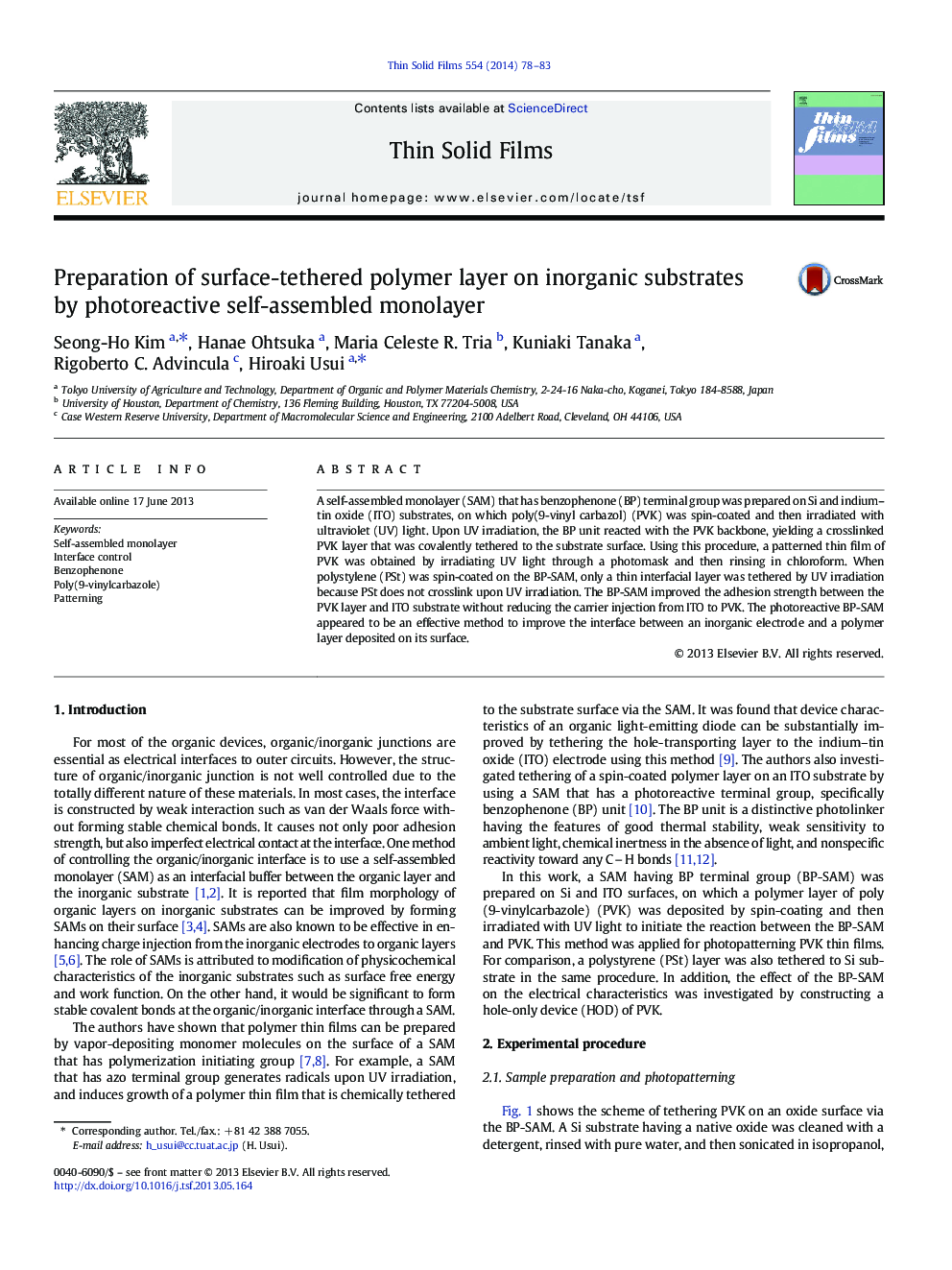| Article ID | Journal | Published Year | Pages | File Type |
|---|---|---|---|---|
| 1665636 | Thin Solid Films | 2014 | 6 Pages |
•Polyvinylcarbazole (PVK) was tethered to substrate by self-assembled monolayer (SAM).•The photoreactive SAM was effective in improving adhesion strength of the films.•This process was applied for photopatterning of PVK layer.•The photoreactive SAM did not impede carrier injection from electrode to PVK.
A self-assembled monolayer (SAM) that has benzophenone (BP) terminal group was prepared on Si and indium–tin oxide (ITO) substrates, on which poly(9-vinyl carbazol) (PVK) was spin-coated and then irradiated with ultraviolet (UV) light. Upon UV irradiation, the BP unit reacted with the PVK backbone, yielding a crosslinked PVK layer that was covalently tethered to the substrate surface. Using this procedure, a patterned thin film of PVK was obtained by irradiating UV light through a photomask and then rinsing in chloroform. When polystylene (PSt) was spin-coated on the BP-SAM, only a thin interfacial layer was tethered by UV irradiation because PSt does not crosslink upon UV irradiation. The BP-SAM improved the adhesion strength between the PVK layer and ITO substrate without reducing the carrier injection from ITO to PVK. The photoreactive BP-SAM appeared to be an effective method to improve the interface between an inorganic electrode and a polymer layer deposited on its surface.
